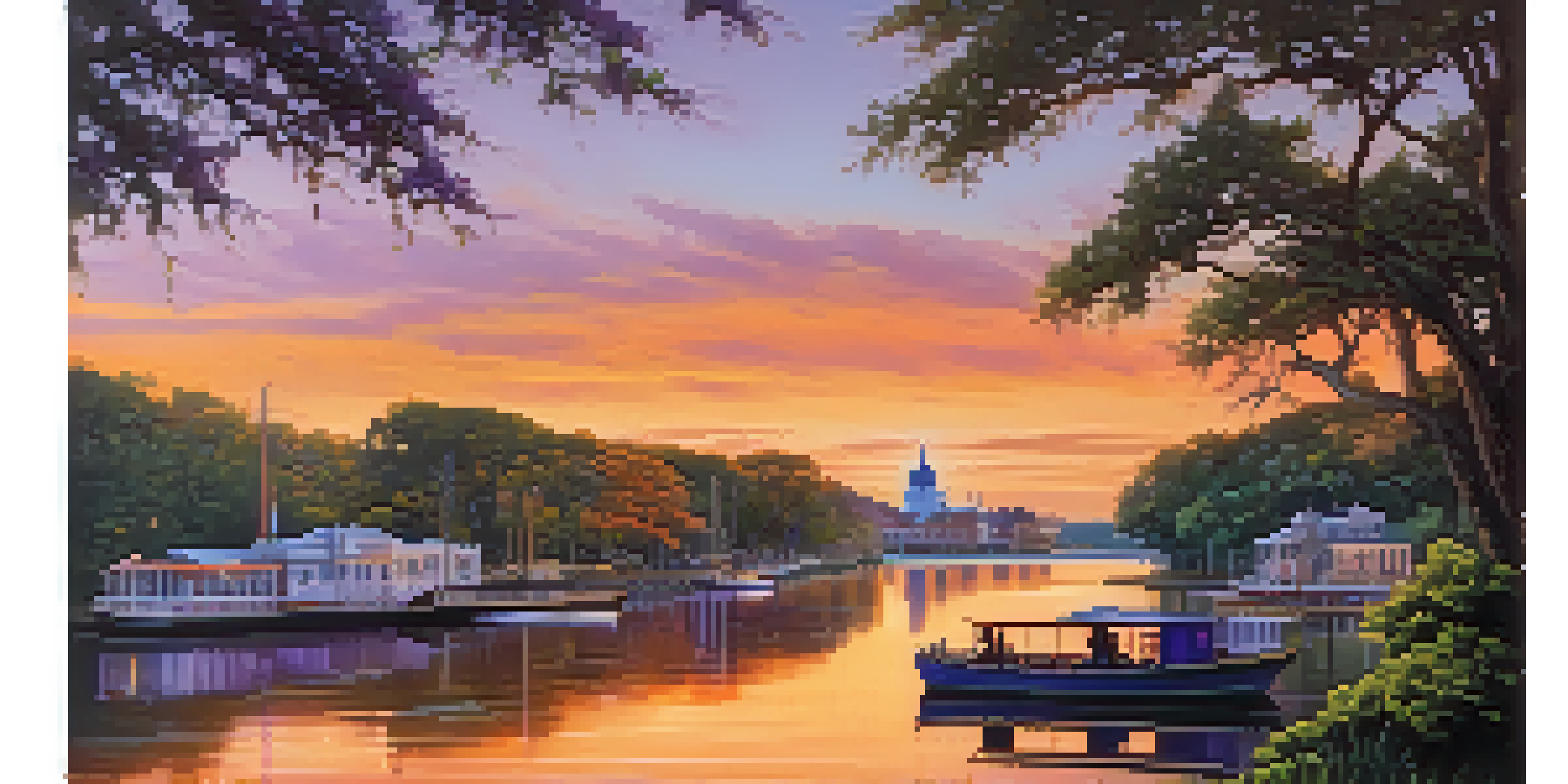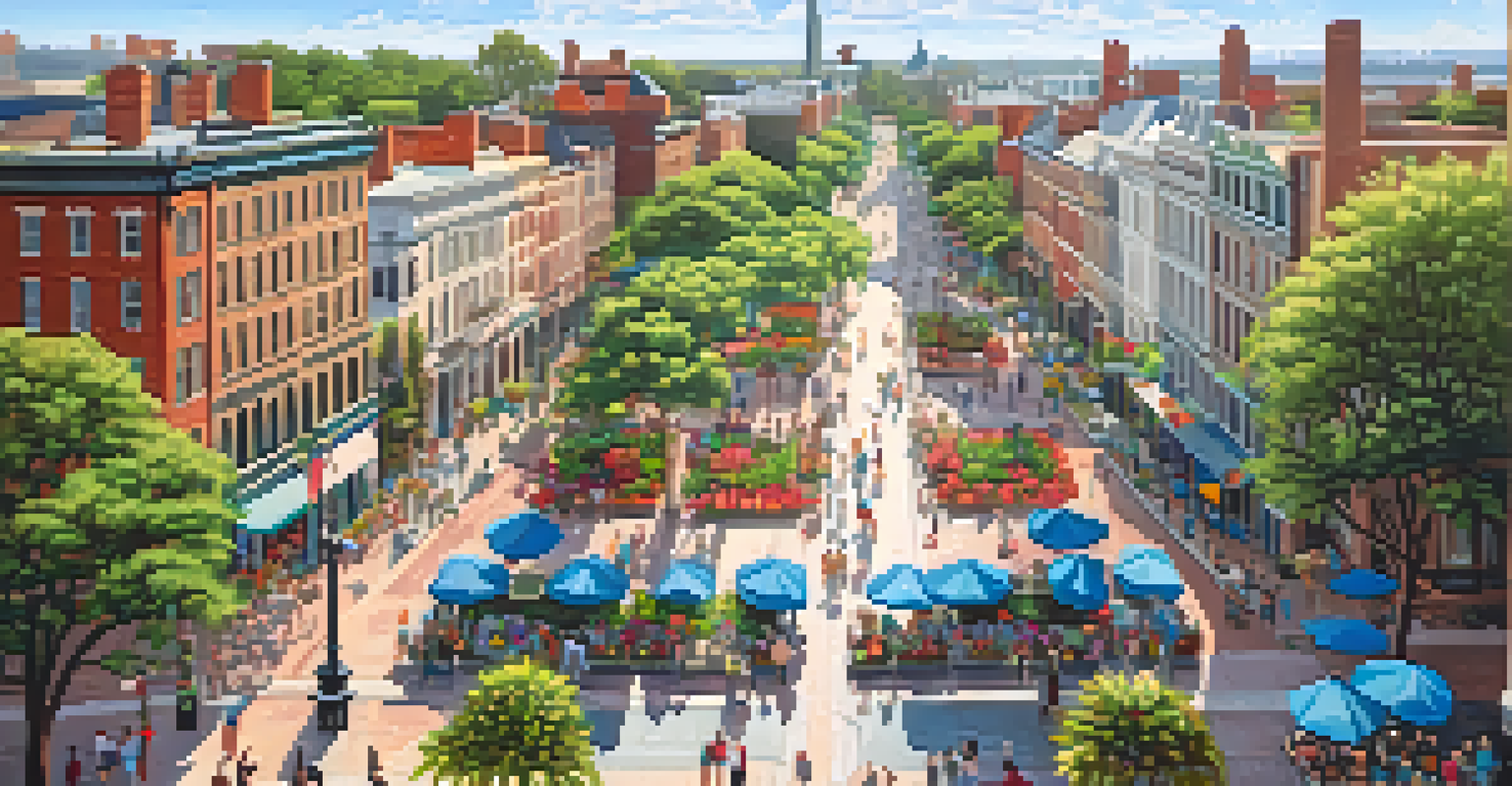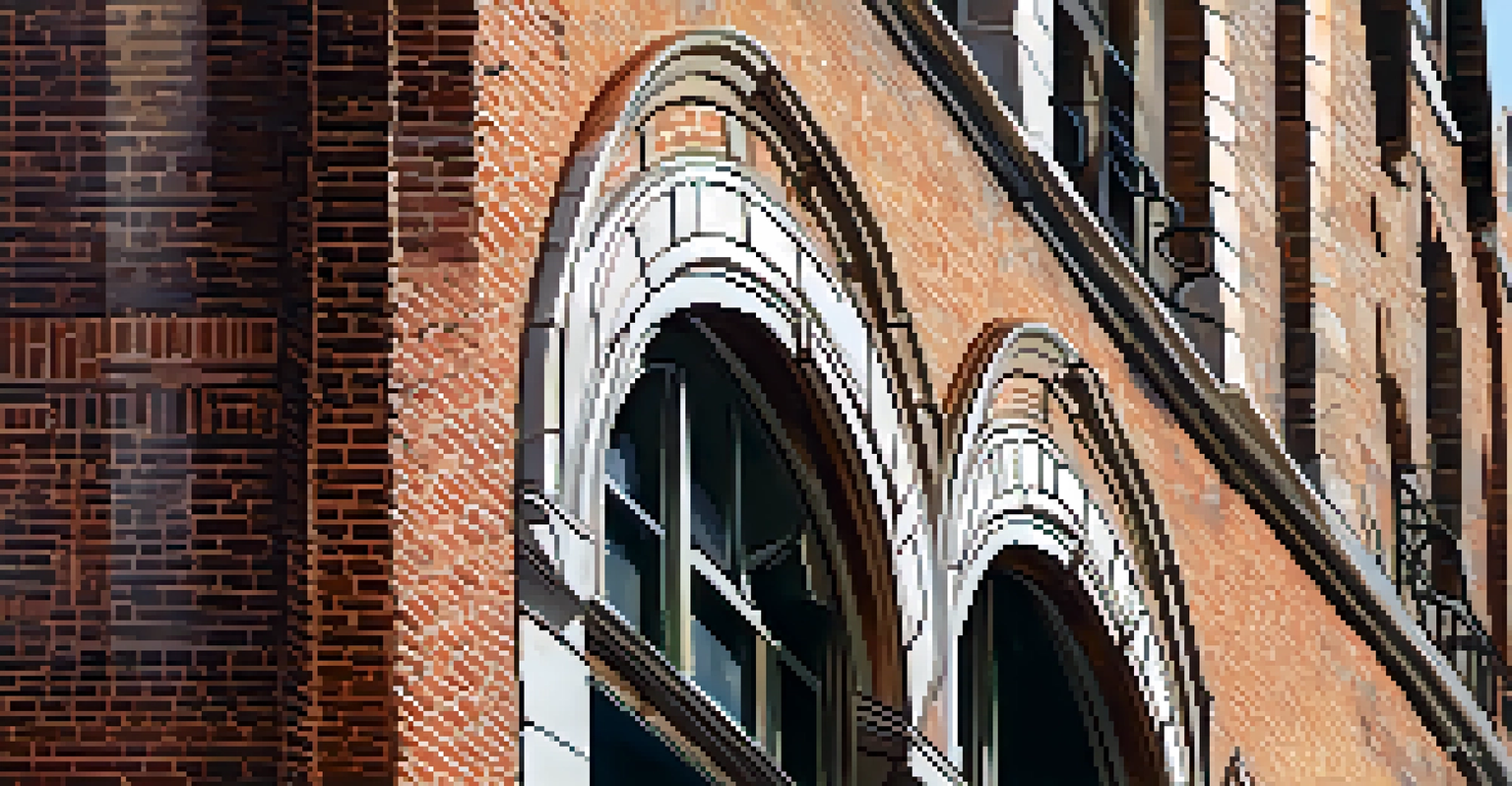History and Culture: Savannah Riverfront's Rich Heritage

The Birth of Savannah: A Historical Overview
Savannah was founded in 1733 by James Oglethorpe as the first city of Georgia. Its strategic location along the Savannah River made it a vital port for trade and commerce. The city's design was innovative for its time, featuring a grid layout with public squares that fostered community engagement.
Savannah is a city that is rich in history and culture, and the Riverfront is its lifeblood.
Over the years, Savannah became a melting pot of cultures, with influences from British, African, and Native American communities. This rich blend of backgrounds has shaped the city’s unique identity and traditions. The early economy thrived on agriculture, notably rice and cotton, which attracted many settlers seeking opportunity.
Today, Savannah's historic district, with its well-preserved architecture and vibrant squares, serves as a reminder of its storied past. Walking along River Street, one can almost hear the echoes of the bustling trade that once defined this area. This blend of history and modernity continues to draw visitors from around the globe.
The Role of the River in Savannah's Development
The Savannah River has always been more than just a waterway; it has been the lifeblood of the city. Initially used for shipping goods and materials, the river facilitated economic growth and established Savannah as a key player in the southern economy. Ships laden with cotton and other goods made their way through the river, shaping the city’s wealth.

As the years passed, the river also became a gathering place for social events and cultural activities. The waterfront was alive with the sounds of music and the aroma of food from nearby markets. This vibrant atmosphere helped foster a sense of community among residents and visitors alike.
Savannah's Rich Historical Roots
Founded in 1733, Savannah's unique identity stems from its diverse cultural influences and strategic location along the Savannah River.
Today, the riverfront area is a hub of activity, with shops, restaurants, and entertainment venues lining the banks. The scenic views and recreational opportunities make it a popular spot for both locals and tourists. The ongoing connection between the river and the city’s culture remains a defining characteristic of Savannah.
Architectural Gems: A Walk Through Time
Savannah's Riverfront is renowned for its stunning architecture, showcasing a mix of styles from different periods. The contrast between historic buildings and modern constructions creates a fascinating visual narrative of the city’s evolution. Each structure along River Street has its own story to tell, from warehouses turned chic boutiques to elegant mansions that exude Southern charm.
The past is never dead. It's not even past.
One of the most iconic buildings is the Old Cotton Exchange, which highlights Savannah's past as a major cotton trading center. This architectural treasure reflects the prosperity that the cotton industry brought to the city. Walking through this area, you can appreciate the craftsmanship and attention to detail that has been preserved over centuries.
In addition to its commercial buildings, Savannah is also home to beautiful churches and homes that contribute to its historical allure. The juxtaposition of these architectural styles creates a picturesque backdrop for visitors exploring the riverfront. It's like stepping back in time while still enjoying the vibrancy of contemporary Savannah.
Cultural Festivals: Celebrating Savannah's Spirit
Savannah is famous for its lively festivals that celebrate the city’s history and culture. One of the most prominent is the Savannah Music Festival, which brings together artists from various genres to perform along the riverfront. This annual event showcases not only music but also the rich cultural tapestry that defines Savannah.
The St. Patrick's Day celebration is another major highlight, attracting thousands of visitors each year. The festivities include a grand parade, live performances, and, of course, plenty of green beer. This event reflects Savannah's unique blend of Irish heritage and Southern hospitality, creating a festive atmosphere that’s hard to resist.
Cultural Festivities Unite Community
Savannah's vibrant festivals, such as the Music Festival and St. Patrick's Day celebrations, highlight the city's rich heritage and foster community spirit.
These cultural festivals play a significant role in fostering community spirit and attracting tourism. They provide a platform for local artists and businesses to thrive while also allowing visitors to immerse themselves in Savannah's vibrant culture. Each festival weaves a thread into the rich fabric of the city’s heritage.
The Influence of African American Culture
The African American community has significantly shaped Savannah's cultural landscape, particularly in the Riverfront area. From the days of slavery to the civil rights movement, their contributions have been vital in defining the city’s identity. Today, visitors can explore this history through various museums and cultural sites that celebrate African American heritage.
One notable landmark is the King-Tisdell Cottage, which serves as a museum dedicated to African American history and culture in Savannah. Here, guests can learn about the achievements and struggles of African Americans in the region. The cottage itself is a beautiful representation of the craftsmanship and artistry of its time.
Cultural celebrations, such as the Savannah Black Heritage Festival, highlight the ongoing influence of African American culture in the city. These events foster a deeper understanding of the community's history and contributions, ensuring that their legacy is honored and remembered. The Riverfront stands as a testament to this rich cultural narrative.
Art and Creativity: The Riverfront's Creative Scene
Art plays a significant role in Savannah's Riverfront, with numerous galleries and street artists contributing to the creative atmosphere. The area is home to a vibrant arts community that reflects the city’s rich heritage and diverse influences. Strolling along the river, one can discover everything from traditional Southern art to contemporary masterpieces.
The annual Savannah Arts Festival showcases local talent and brings together artists from various disciplines. This event not only highlights visual arts but also includes performances, workshops, and demonstrations. It creates an opportunity for artists to connect with the community and for visitors to engage with the local art scene.
Art and Preservation on the Riverfront
The Riverfront not only showcases Savannah's artistic scene but also emphasizes ongoing preservation efforts to maintain the city's historic character.
Public art installations and murals further enhance the Riverfront, creating an open-air gallery for everyone to enjoy. These works often tell stories of the city’s history and culture, inviting passersby to pause and reflect. The Riverfront truly embodies the spirit of creativity and expression that defines Savannah.
Preservation Efforts: Safeguarding Savannah's Heritage
Preserving Savannah's rich heritage is a priority for both residents and city officials. Various organizations and initiatives work tirelessly to maintain the historic character of the Riverfront. This commitment ensures that future generations can appreciate the beauty and significance of the area.
The Historic Savannah Foundation is one such organization dedicated to preservation efforts. They advocate for the protection of historic sites and educate the public about the importance of maintaining the city’s architectural legacy. Through their work, they foster a sense of pride and responsibility among residents.

Community involvement is also crucial in these preservation efforts. Local residents often participate in events and initiatives aimed at raising awareness about the significance of Savannah’s history. This collective effort helps to keep the spirit of the Riverfront alive, ensuring it remains a vibrant part of the city’s identity.